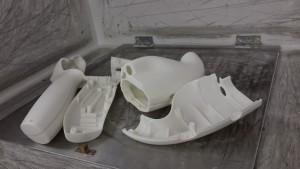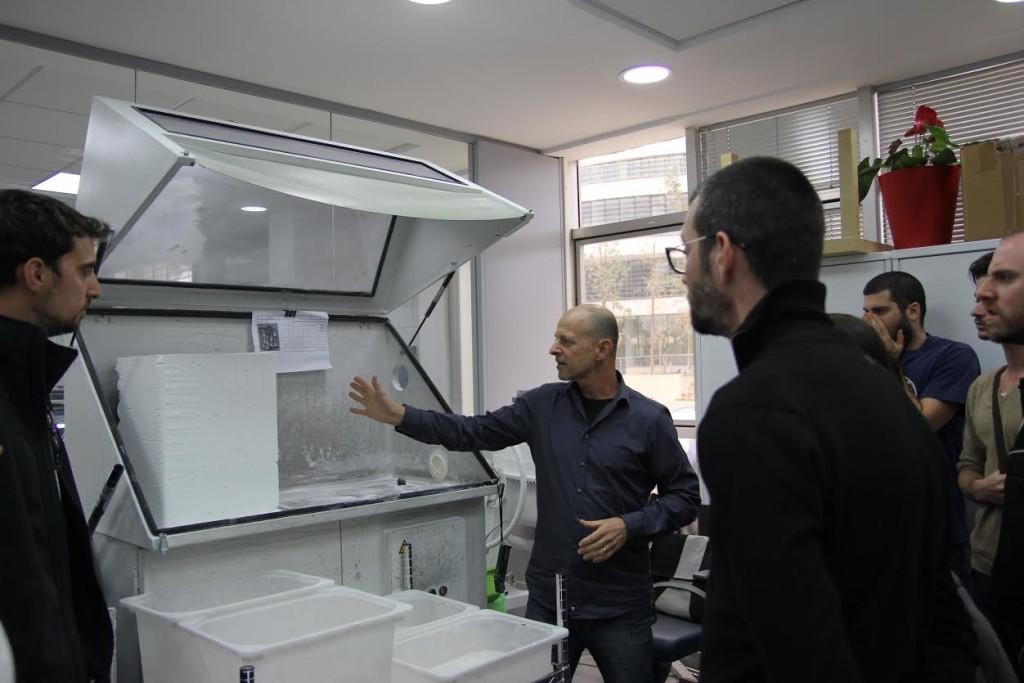 Over the past two decades, the 3D printing industry made its way to become the best choice for fast prototype production also known as rapid prototyping. Nowadays, with powder bed technology for additive manufacturing and the use of metal and polymer production ready materials, the industry’s focus has shifted to the next phase, serial fabrication of end products using Additive Manufacturing (3D printing).
Over the past two decades, the 3D printing industry made its way to become the best choice for fast prototype production also known as rapid prototyping. Nowadays, with powder bed technology for additive manufacturing and the use of metal and polymer production ready materials, the industry’s focus has shifted to the next phase, serial fabrication of end products using Additive Manufacturing (3D printing).
Serial production with Additive Manufacturing is changing the way the industry is doing business. At companies like Toyota, Israel Aircraft Industries, Külicke & Soffa, and UnderArmour, it’s already part of the normal course of business. The new technology, which allows fabrication everywhere, anytime, without the need for tooling, can eliminate most of the supply chain and shorten the delivery line between manufacturers and customers. Producing by pressing a print button allows a minimal interaction between the designer/brand and the manufacturer. It also allows the brand to distribute its products digitally and have them manufactured by a worldwide network of 3D printer providers within a short distance from the end customer.
By simplifying the manufacturing and delivery process, every brand can become a virtual LEAN manufacturer that can produce and supply directly, on demand, to its customers. The product has the same manufacturing cost per item (!), whether it’s one of its kind or one of thousands of the same product, and the rapid manufacturing process eliminates the need to stock inventory in a warehouse. A huge cost savings to any product company!
 This new economy, made possible by 3D printing, is based on digital manufacturing from a 3D design file, typically a 25 year old format named STL. It is the only format that every 3D printer’s software in the world can read and process. The STL format holds the 3D geometry only and no other dimensions of production. The most common file delivery system is email. The STL file is sent to the manufacturer without any information or restriction regarding the manufacturing process, materials, geometric tolerances, part resolutions, part orientation, digital rights, and so on. There are several problems with this. First, most of the time the designer has to attach some text, word or excel files, pdf, drawings, pictures, and so on to give production and assembly instructions. Second, the STL file is completely “naked” and might be inadvertently changed on the way to the manufacturer. In addition, if someone unscrupulous were to get this STL file they could produce as many items as they like from it.
This new economy, made possible by 3D printing, is based on digital manufacturing from a 3D design file, typically a 25 year old format named STL. It is the only format that every 3D printer’s software in the world can read and process. The STL format holds the 3D geometry only and no other dimensions of production. The most common file delivery system is email. The STL file is sent to the manufacturer without any information or restriction regarding the manufacturing process, materials, geometric tolerances, part resolutions, part orientation, digital rights, and so on. There are several problems with this. First, most of the time the designer has to attach some text, word or excel files, pdf, drawings, pictures, and so on to give production and assembly instructions. Second, the STL file is completely “naked” and might be inadvertently changed on the way to the manufacturer. In addition, if someone unscrupulous were to get this STL file they could produce as many items as they like from it.
 For the industry to move forward with production of end products, these shortcomings must be fixed. The brand should be able to wrap some meta data around the product that can specify the production requests (3D printing technology, material, etc). Protecting the number of items that can be produced from a file at the same time will alleviate brand fears of theft of IP and economic rights. With traffic of more than a million files per day from designers to manufacturers worldwide, the industry’s inability to solve these problems costs a lot and creates many frustrations for the designer, manufacturer, and customer triangle.
For the industry to move forward with production of end products, these shortcomings must be fixed. The brand should be able to wrap some meta data around the product that can specify the production requests (3D printing technology, material, etc). Protecting the number of items that can be produced from a file at the same time will alleviate brand fears of theft of IP and economic rights. With traffic of more than a million files per day from designers to manufacturers worldwide, the industry’s inability to solve these problems costs a lot and creates many frustrations for the designer, manufacturer, and customer triangle.
For the 3D printing industry to grow to its full potential, the industry most adopt a workflow that can ensure that each 3D design file has a monovalent specification of all dimensions of the planned manufacturing process. A secure specification and tracking system is needed to promise that end users are getting the same product they are paying for, made from the right material in the right process and reflecting the designer’s intent. Final product performance is a key factor for brands, designers, and engineers who have a professional reputation to uphold which largely relies on the manufacturing process.
Additive manufacturing director manager. Senior business development with more than 20 years of experience at the 3D CAD market. Designer and innovator. Manage the largest 3D printing service bureau in Israel. Blogger and publisher of the 10X3DP, a weekly Hebrew newsletter for the local 3D industry.
Subscribe to Our Email Newsletter
Stay up-to-date on all the latest news from the 3D printing industry and receive information and offers from third party vendors.
You May Also Like
Profiling a Construction 3D Printing Pioneer: US Army Corps of Engineers’ Megan Kreiger
The world of construction 3D printing is still so new that the true experts can probably be counted on two hands. Among them is Megan Kreiger, Portfolio Manager of Additive...
US Army Corps of Engineers Taps Lincoln Electric & Eaton for Largest 3D Printed US Civil Works Part
The Soo Locks sit on the US-Canadian border, enabling maritime travel between Lake Superior and Lake Huron, from which ships can reach the rest of the Great Lakes. Crafts carrying...
Construction 3D Printing CEO Reflects on Being Female in Construction
Natalie Wadley, CEO of ChangeMaker3D, could hear the words of her daughter sitting next to her resounding in her head. “Mum, MUM, you’ve won!” Wadley had just won the prestigious...
1Print to Commercialize 3D Printed Coastal Resilience Solutions
1Print, a company that specializes in deploying additive construction (AC) for infrastructure projects, has entered an agreement with the University of Miami (UM) to accelerate commercialization of the SEAHIVE shoreline...






























